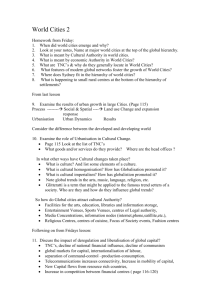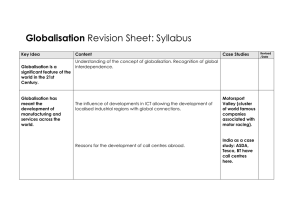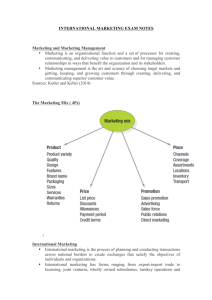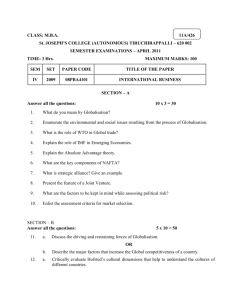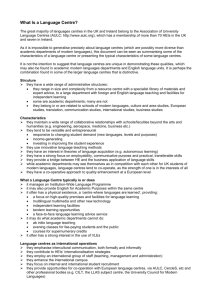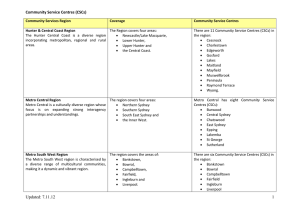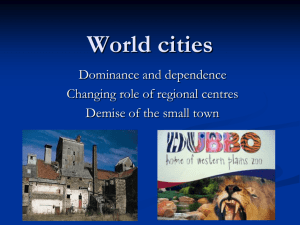world cities - bankstowntafehsc
advertisement
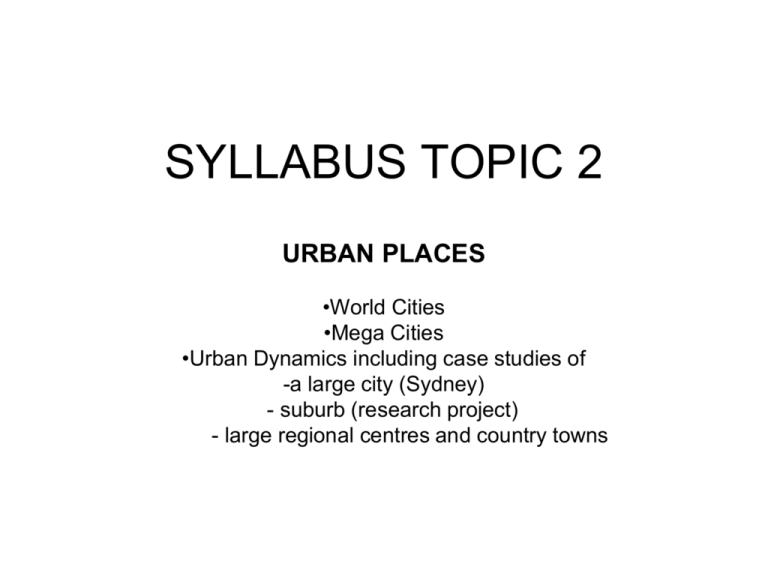
SYLLABUS TOPIC 2 URBAN PLACES •World Cities •Mega Cities •Urban Dynamics including case studies of -a large city (Sydney) - suburb (research project) - large regional centres and country towns WORLD CITIES A world city is…. • Defined as a large city that has outstripped its national urban network….it has become part of an international global system….it is a centre of: • (a) political power • (b) world trade and communication • (c) a leader in banking and finance • (d) attracts world stage, entertainment and sporting events • (e) HQ non-government and TNC’s • (f) major tourist destination • (g) are the command and control centres in the borderless domain of the new global economy Why have world cities developed? • The emergence of world cities is the product of the GLOBALISATION of economic activity …..this has steadily been occurring since humans started moving across the globe....it increased with the industrial revolution….then after World War 2…. • Globalisation is the process of global economic and cultural integration……. The Character of World Cities • The control and command centres in the network of cities in the global economy • Centres for most leading global markets in finance, banking, commodities • Sites for the concentration of corporate HQ and TNC’s • Centres of specialised high order business services such as accounting, advertising, law and property development • Sites where most leading NGO’s, Intergovernmental organisations, trade and professional organisations are found. • Are prestigious locations for entertainment, affluent lifestyle and housing • Attractive places to live for highly specialised and highly paid elite workers in the corporate head offices, businesses and financial services • Are major transport hubs • Are key locations for major media, fashion, design and film organisations. • Are concentrations for the electronic exchange of information together with the infrastructure to support this exchange • Are major tourist centres Reasons for the rise of World Cities Since the 1950’s there has been an acceleration in the growth of world cities –due to: 1. Technology – improvements in transport and communication eg. Rise of container shipping, refrigerated transport, satellite technology, the PC, mobile phones, blackberries, email, wireless communication and demise of the telegraph, telex, typewriter and land line 2. Deregulation of financial markets – money can move electronically across borders easily 3. Emergence of Transnational corporations (TNC’s) eg. Unilever, News Limited. 4. New ways of organising business operations eg. outsourcing or moving labour intensive manufacturing off-shore to low cost developing countries 5. Emergence of new information based forms of economic activity eg. Investment capital, equities, bonds, foreign exchange, futures investment. 6. Reduction of trade barriers and tariffs (taxes) between countries to allow easier movement of goods between countries Spatial Pattern • World cities are large urbanised areas with extensive links globally, nationally and locally in all aspects of its economy • These cities have between 1 and 20 million people • These cities are classified according to their economic power into a hierarchy from dominant world cities, major world cities to secondary world cities then national and sub national cities. • Dominant world cities are NY, London and Tokyo • Major world cities include: Paris, Los Angeles, Munich • Secondary world cities include: Sydney, Hong Kong, Seattle and Sao Paulo • Sydney is Australia’s only world city with most of the headquarters of businesses located in Sydney; it has a high ranking futures and stock exchange and major international gateway • Within the global network are several subsystems including : Asia – Tokyo-Singapore-Hong Kong; North America – NY, Chicago and LA; Western Europe – London, Paris, Rome; • Examples of the globalisation of markets, finance, culture, communication, transport, tourism Examples of Globalisation of culture and economy • • • • • • • • • • • • Coca Cola Nike Nokia Microsoft Big Brother Australian Idol Matrix and Superman movies Fox Studios Daily Telegraph Price Waterhouse Coopers Nestle (chocolate and food company) * THESE ARE ONLY DOT POINT LISTS...YOU NEED TO READ AND EXPLAIN FURTHER ...SEE TEXT... Dominance and Dependence • Some urban places exert dominance over other places • Other urban centres rely upon more powerful urban centres for: • (a) material wellbeing • (b) goods and services they need • (c) investment • (d) information • (e) culture • (f) income The Global Economic Crisis • A good example of the power of globalisation • Financial sector in USA source of bad loans affected stock market, investment in jobs and capital goods has spread globally resulting in large companies/banks such as Ford and General Motors (USA) moving to bankruptcy and retrenching staff in Australia – global finance and decision making. The Internet and Technology • Global changes in technology is bringing about huge changes in all areas of our life and changing traditional publishing, television, music and communication...with instant dowloads, digital media, decline of print media
